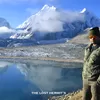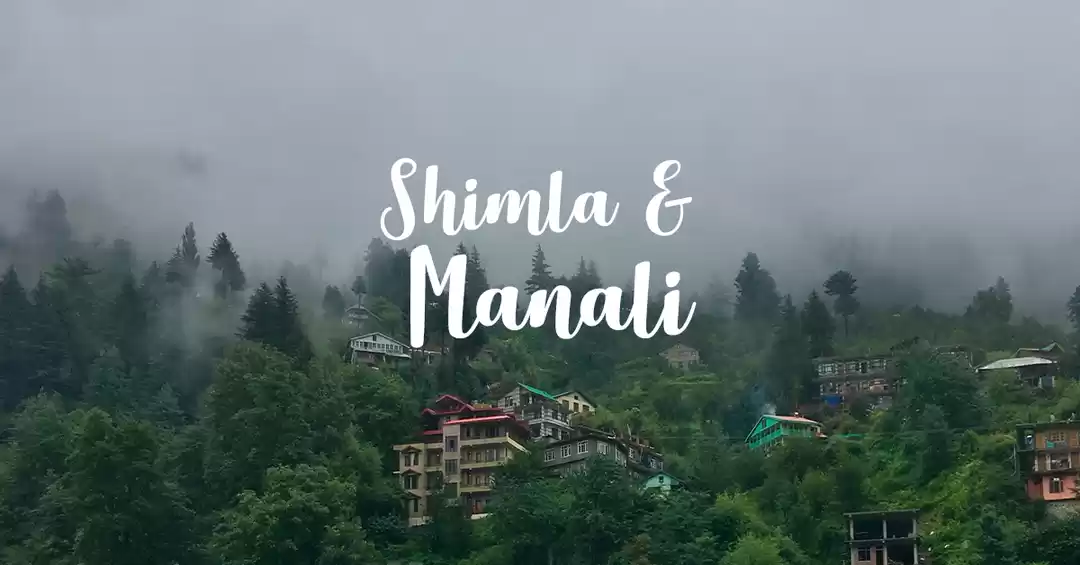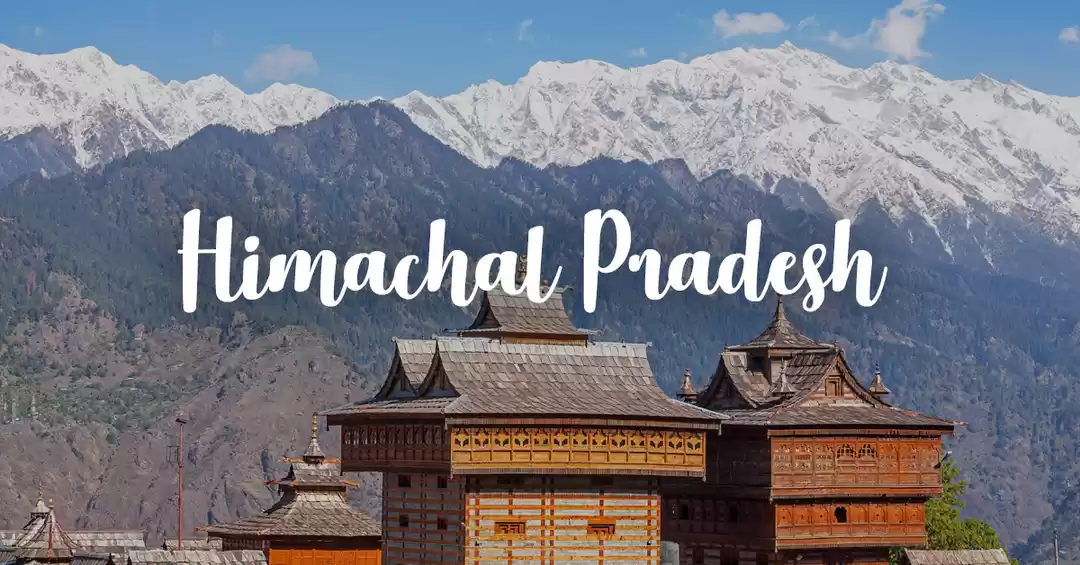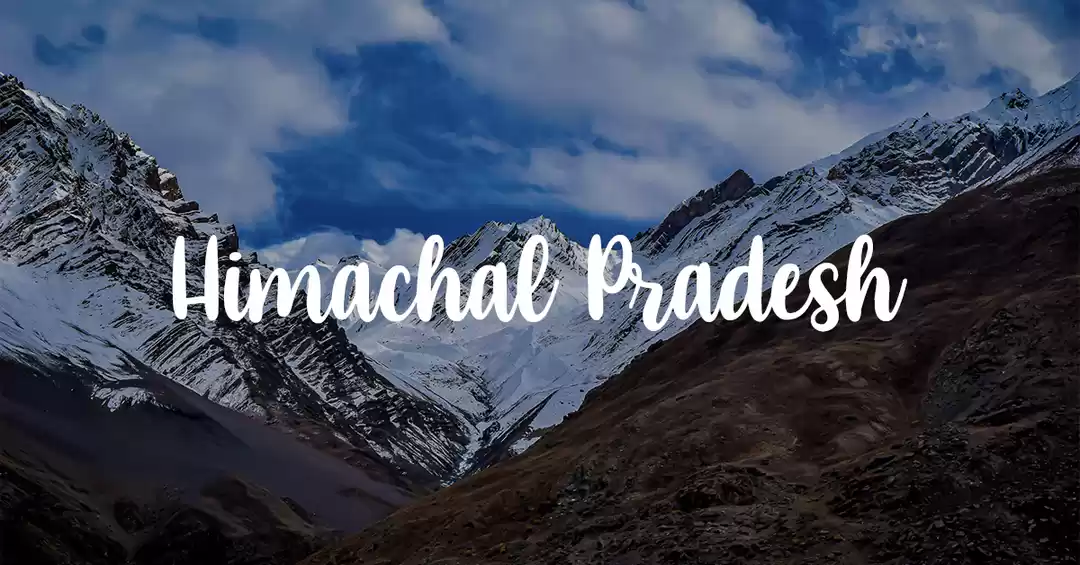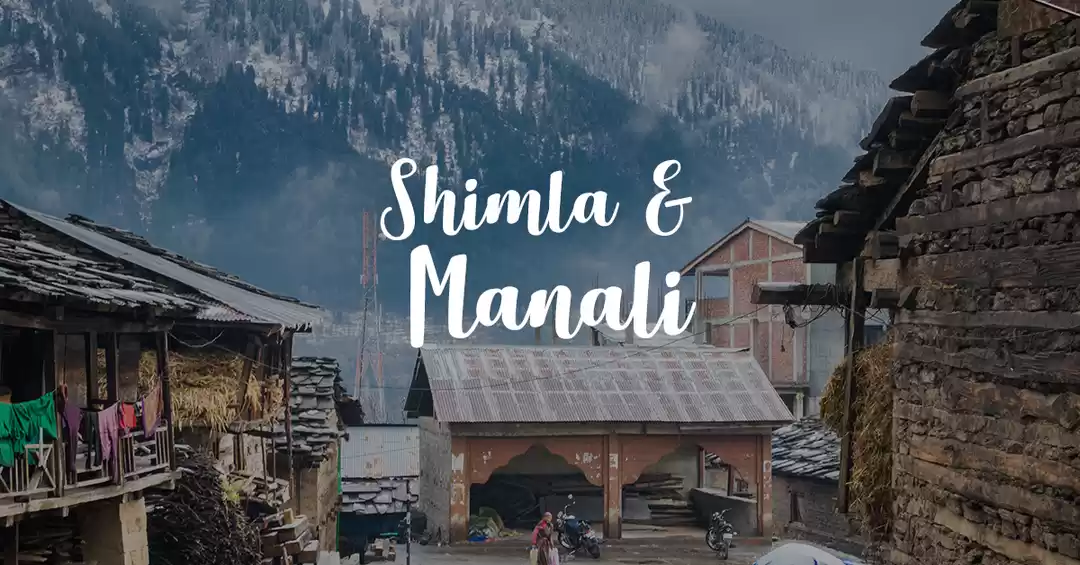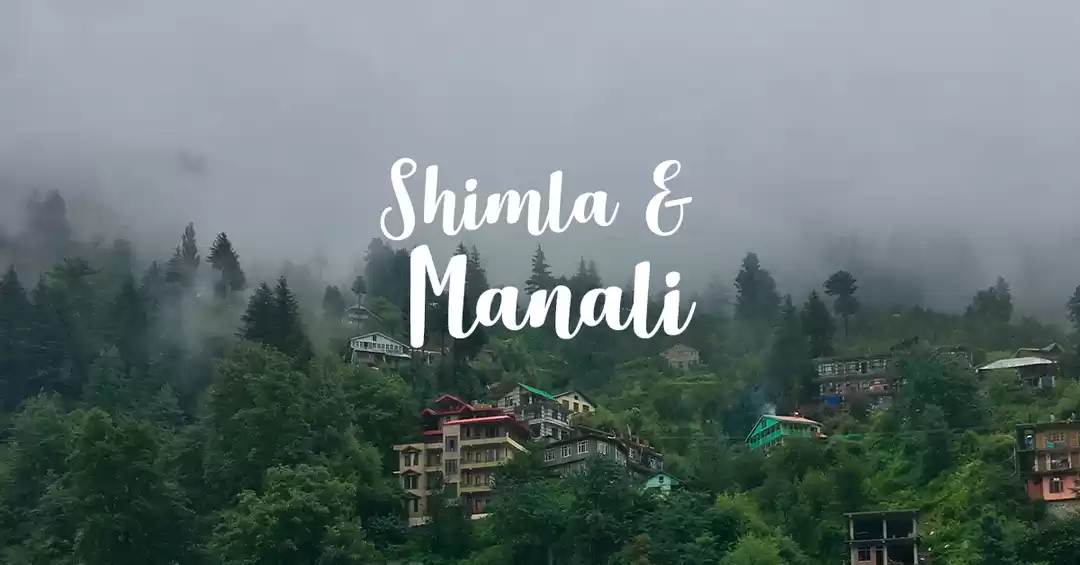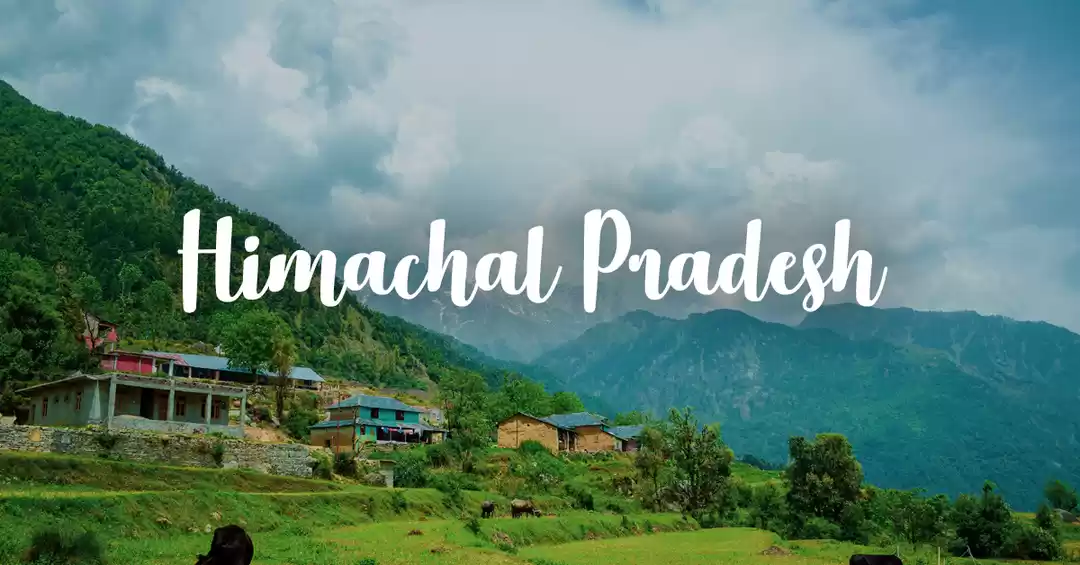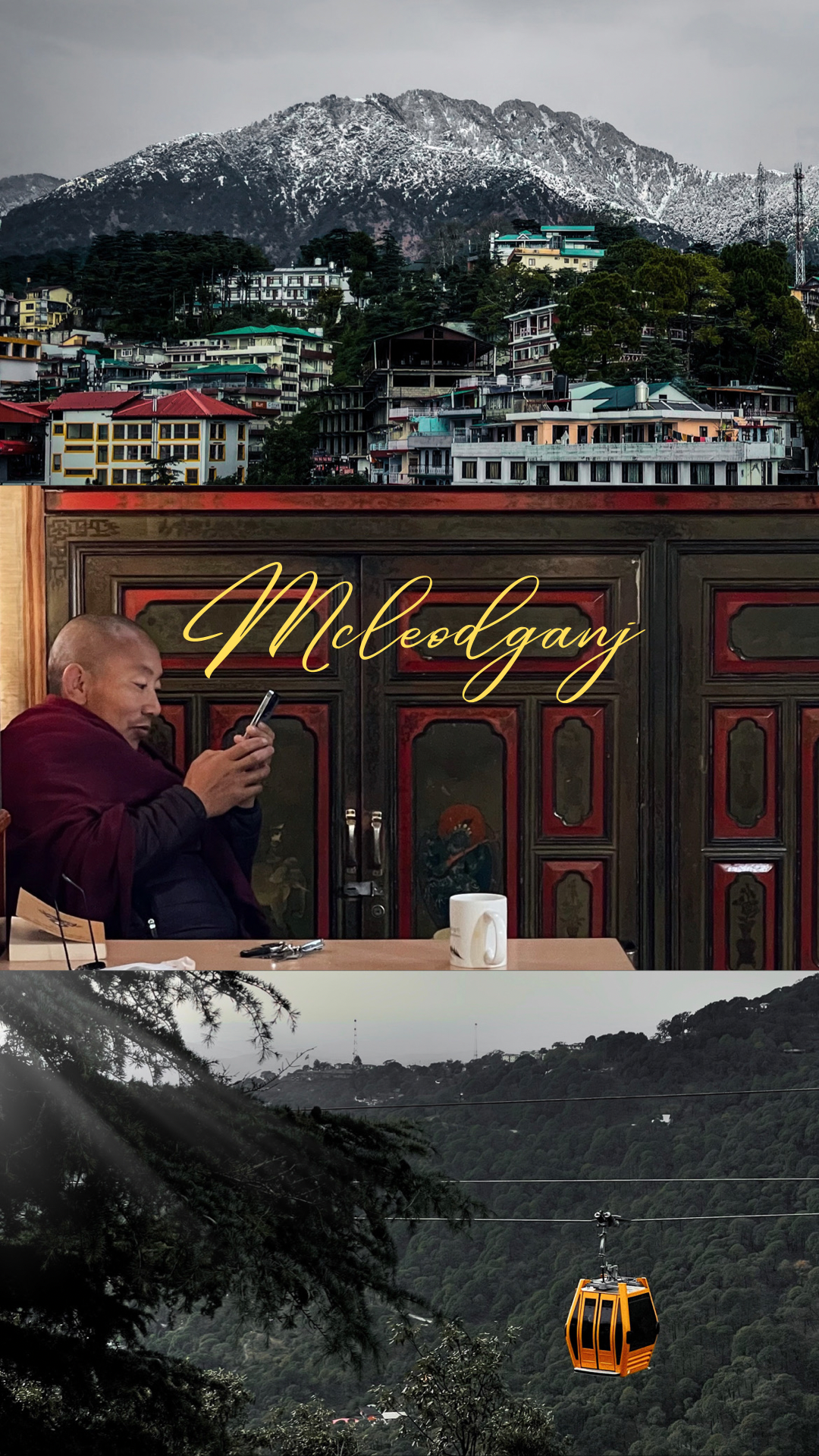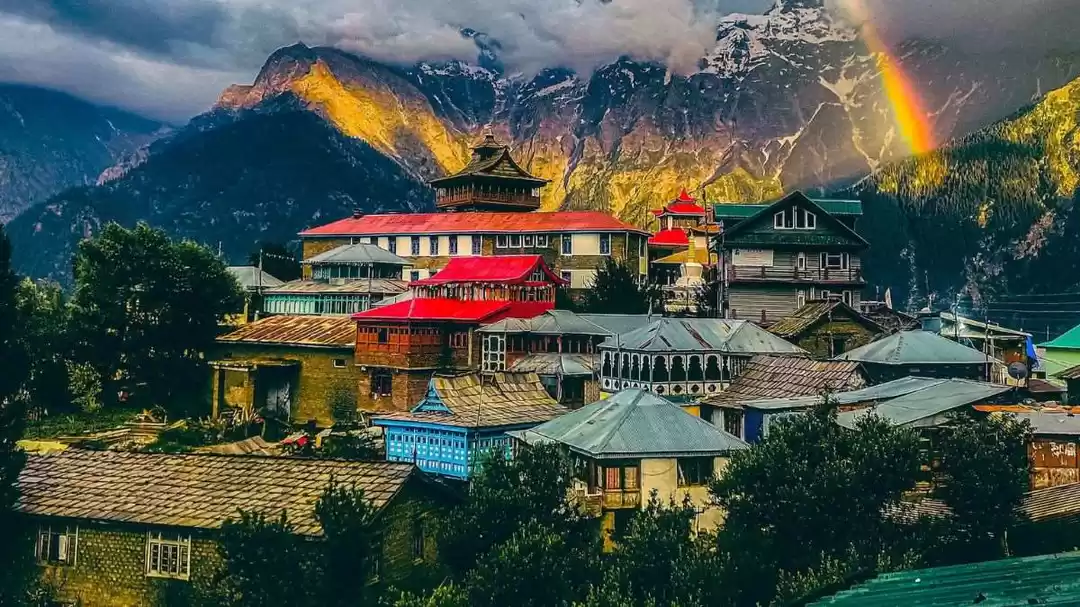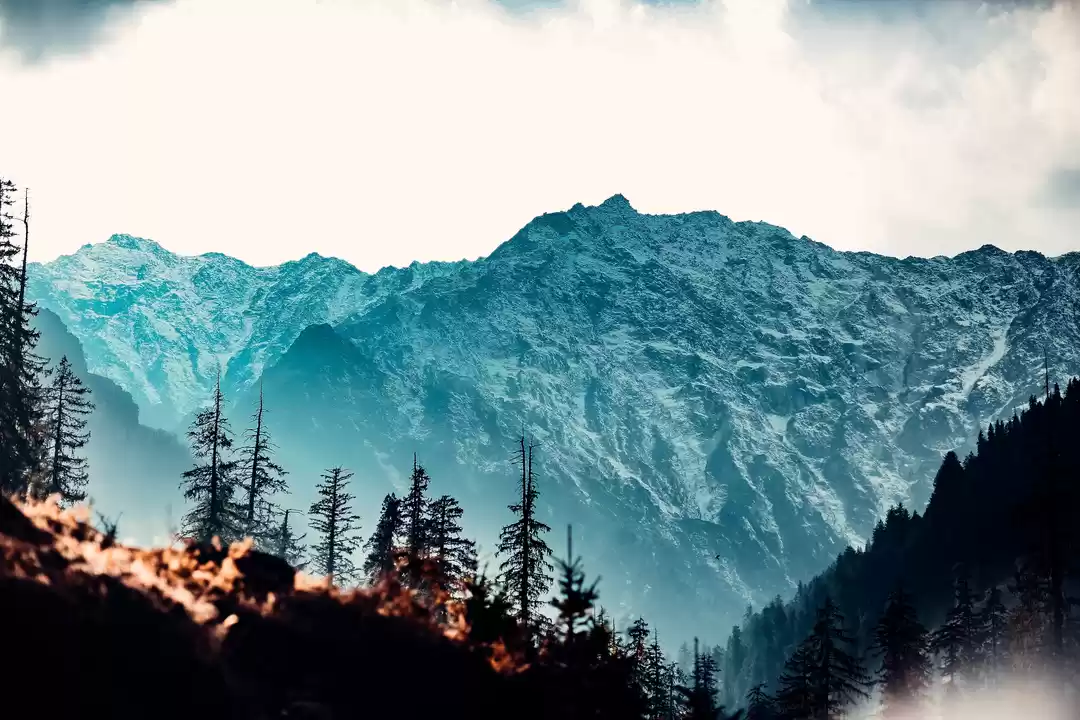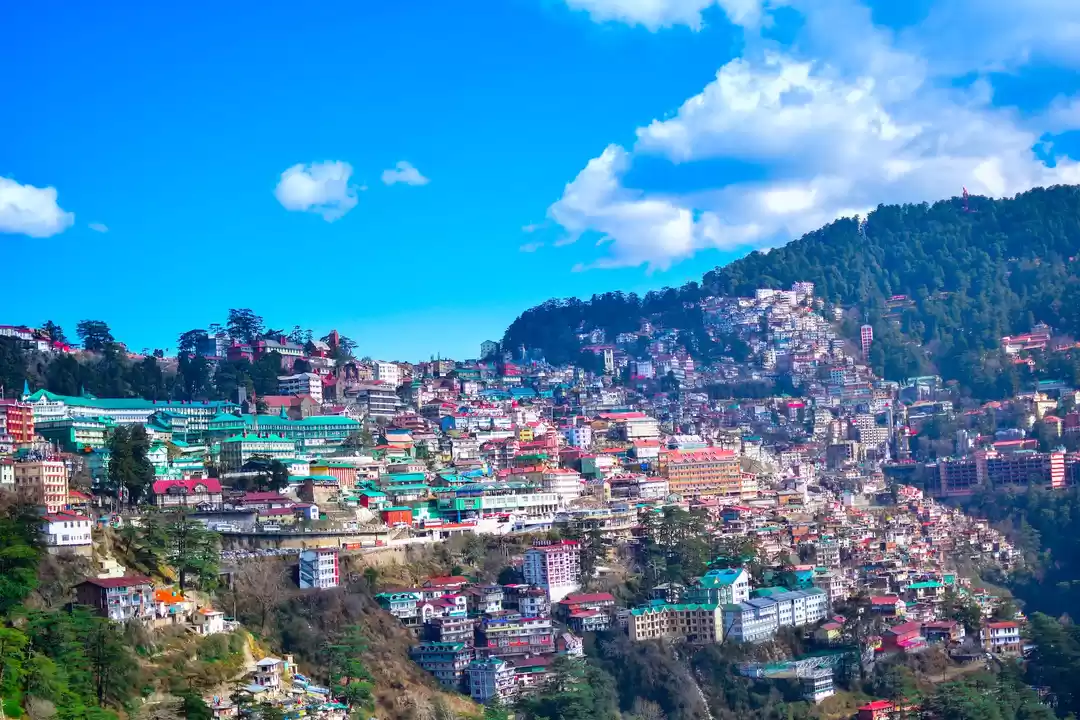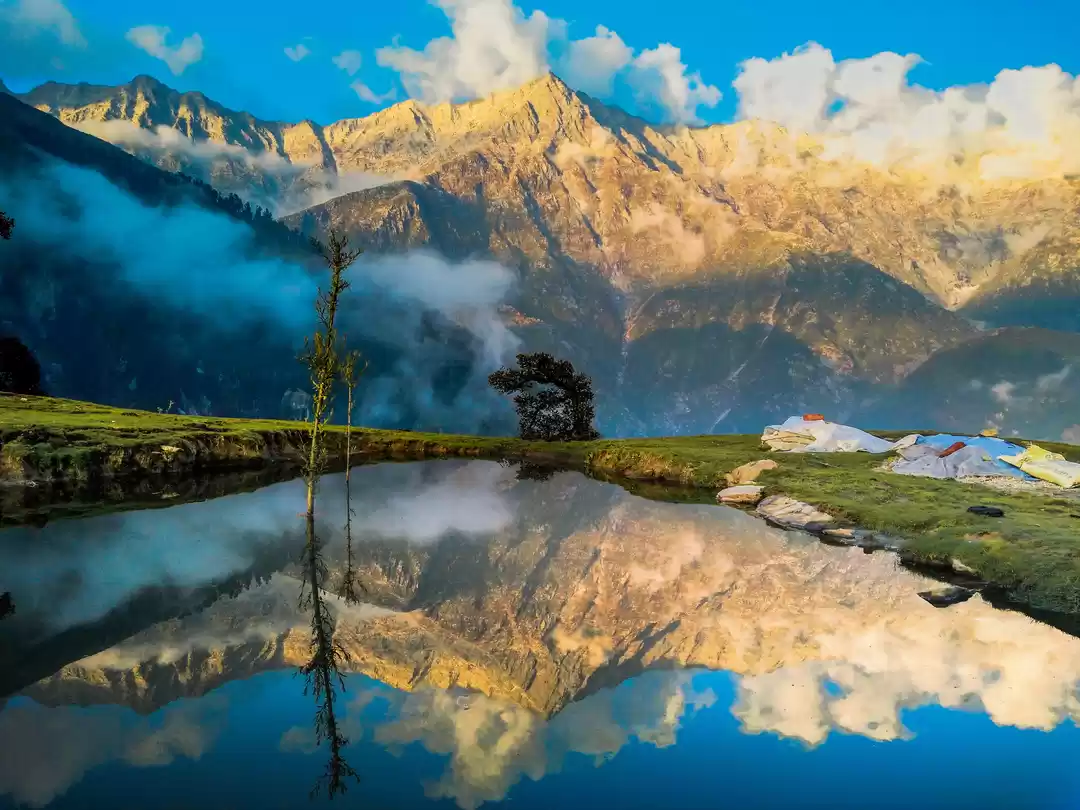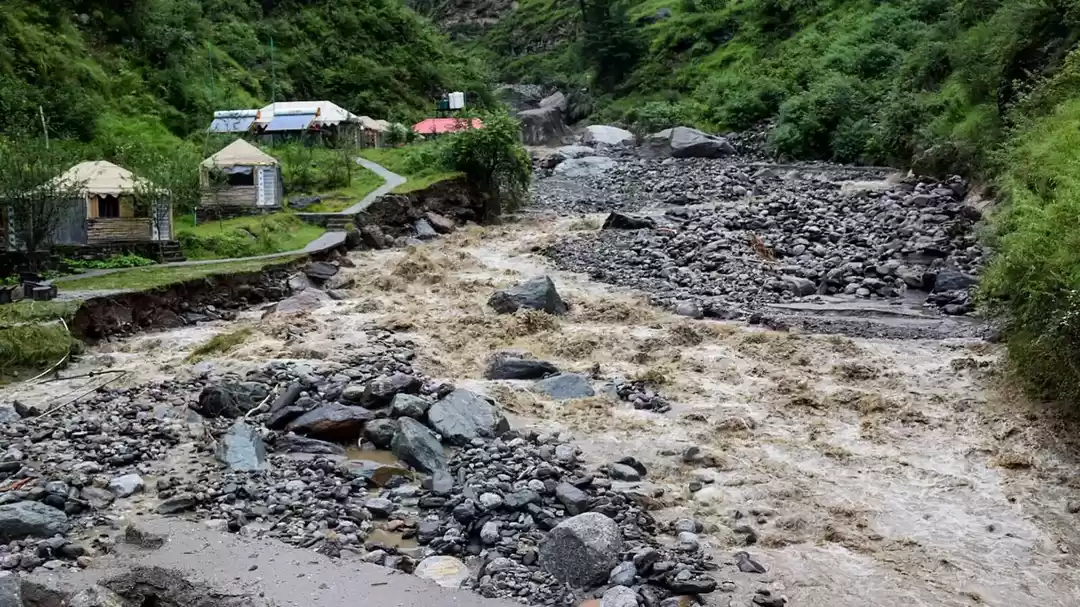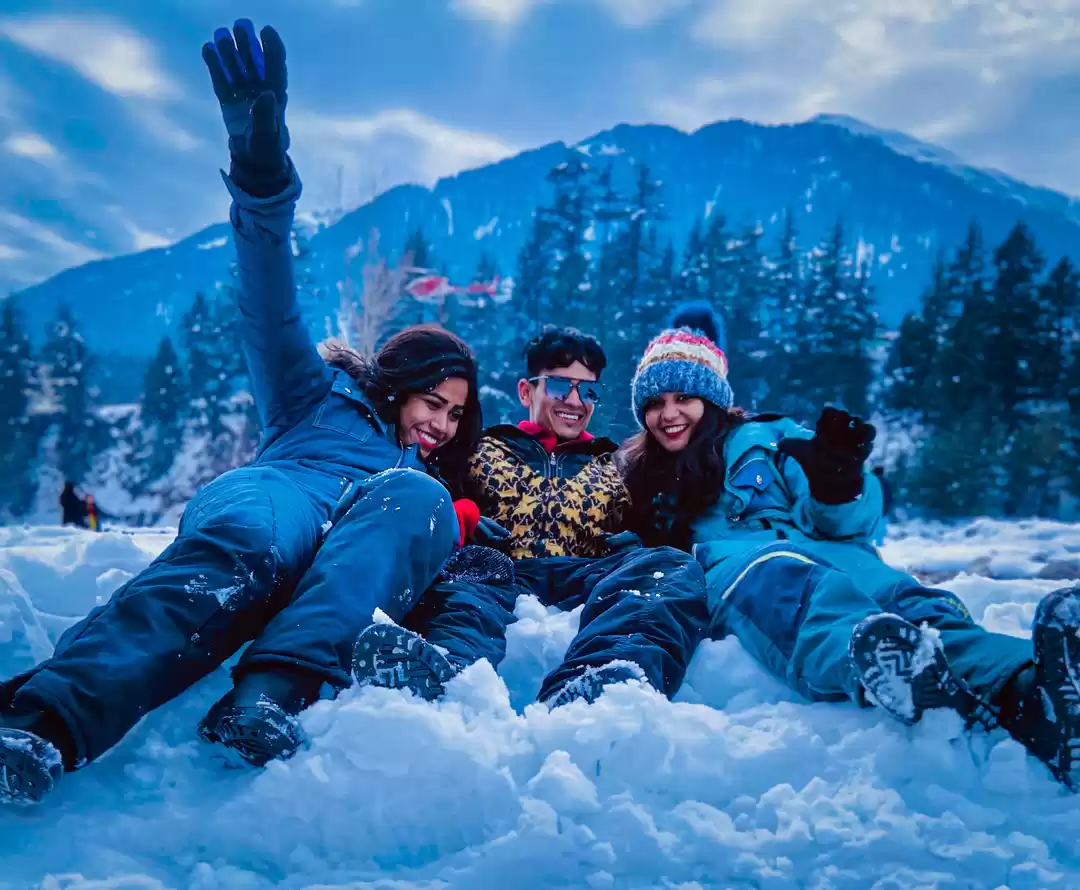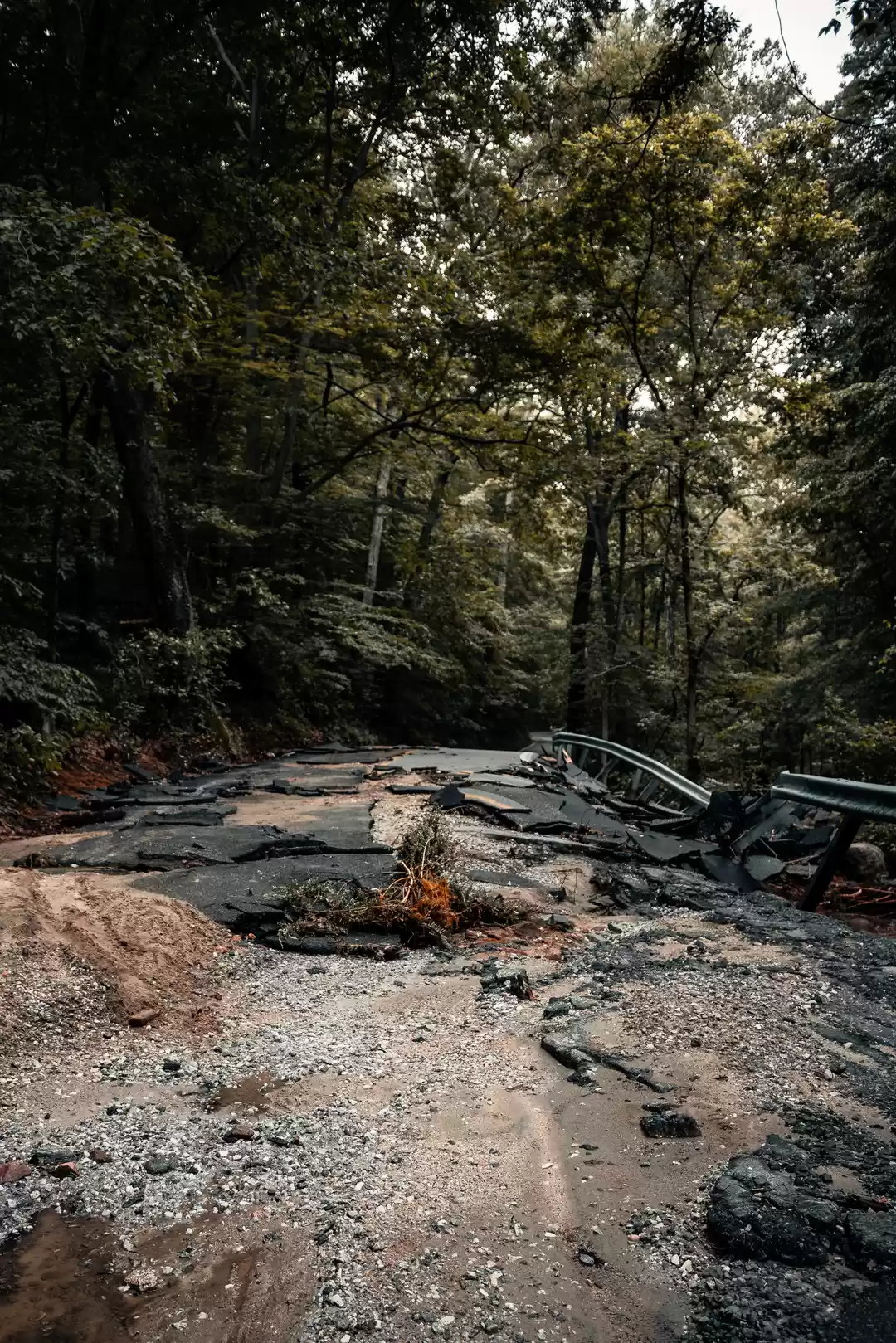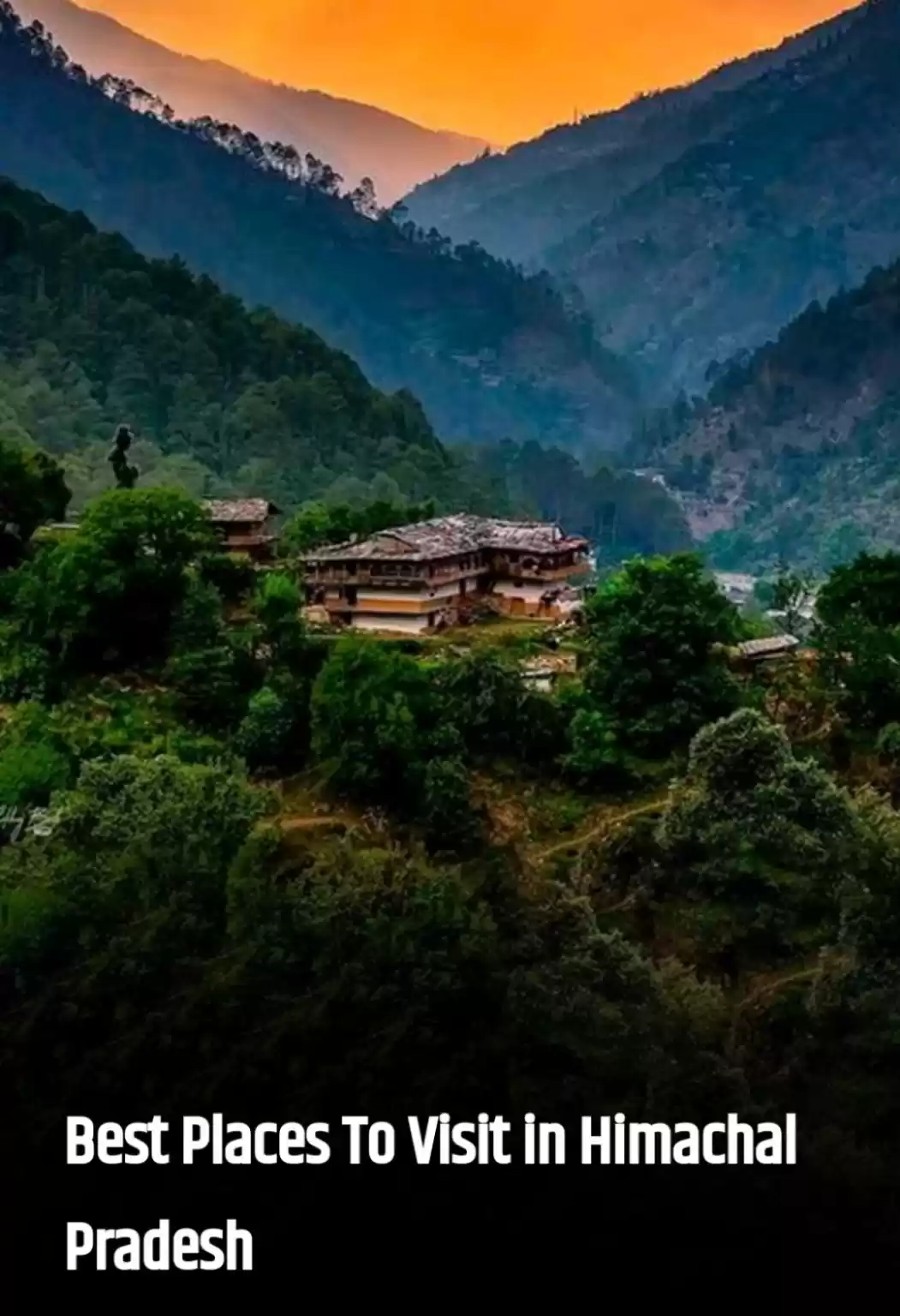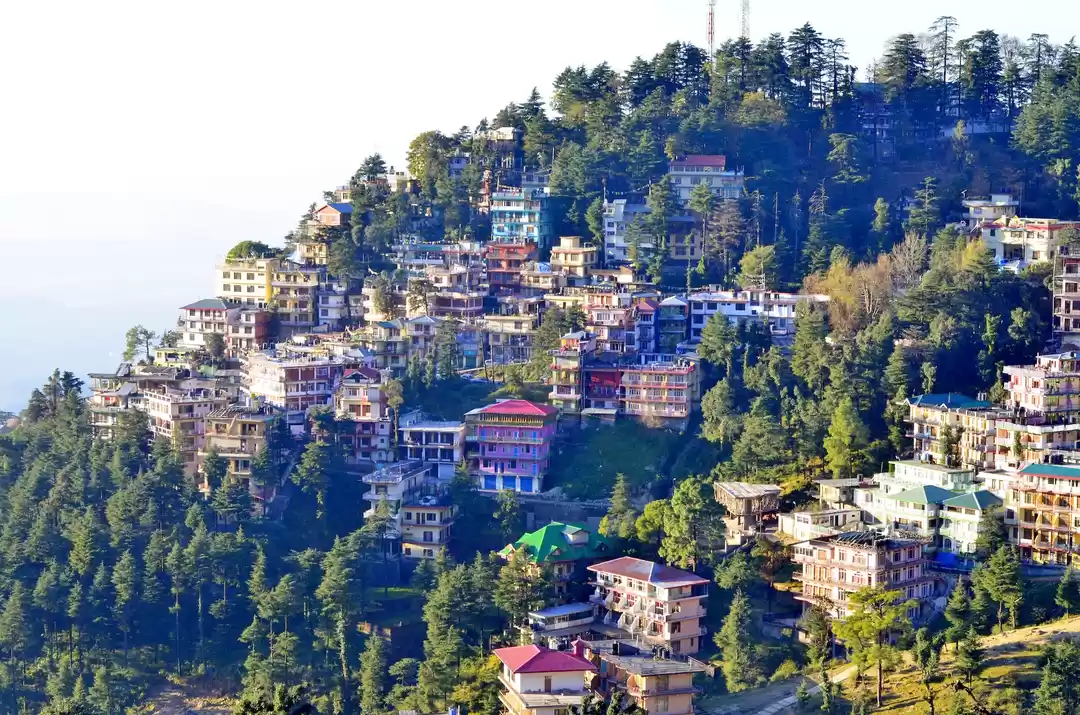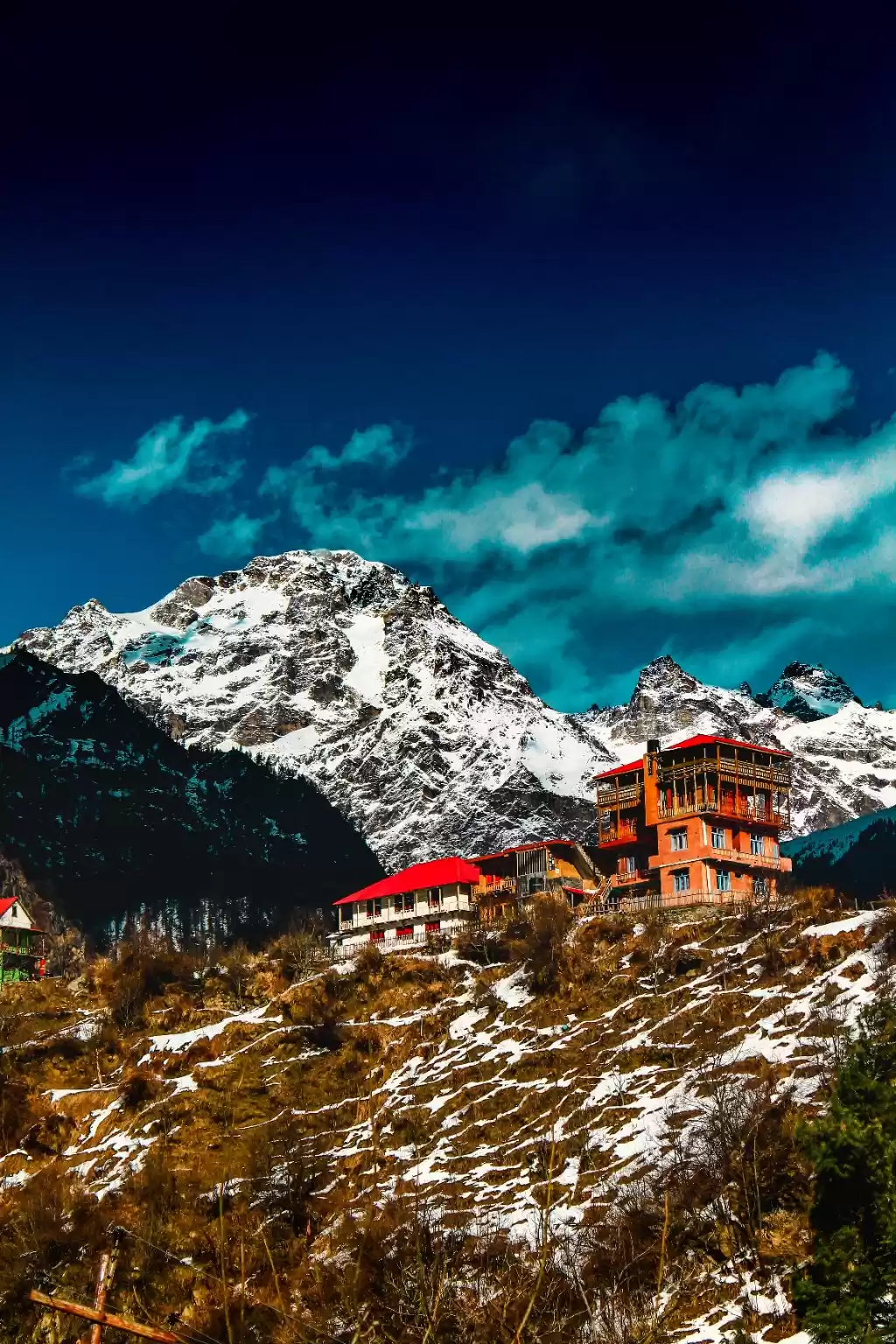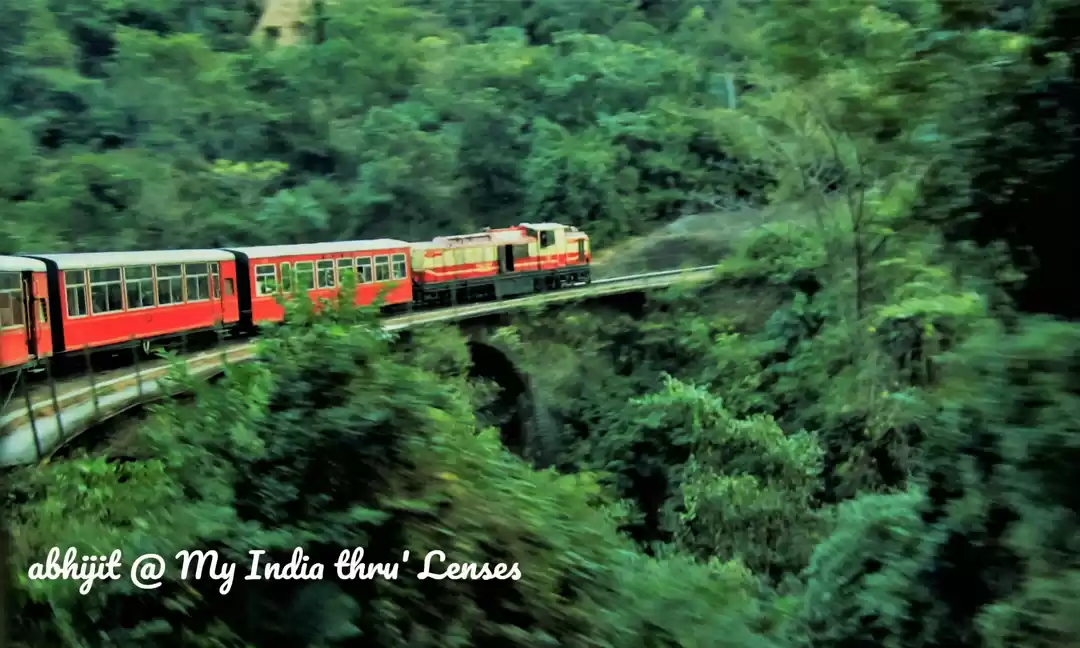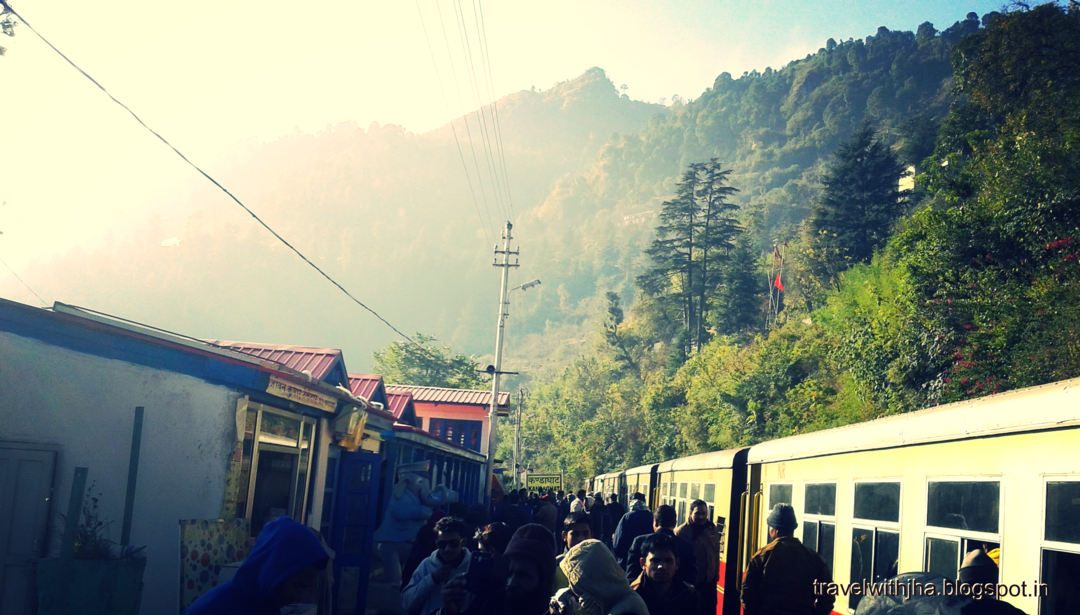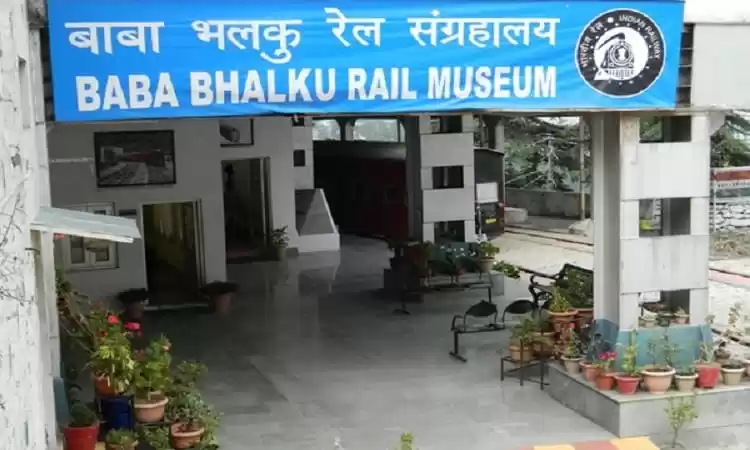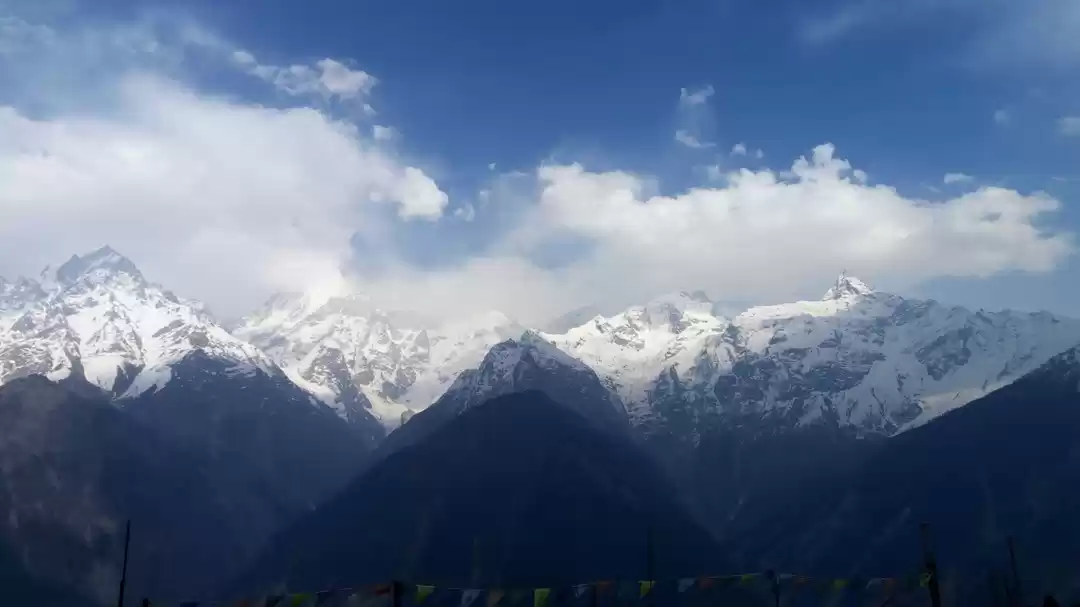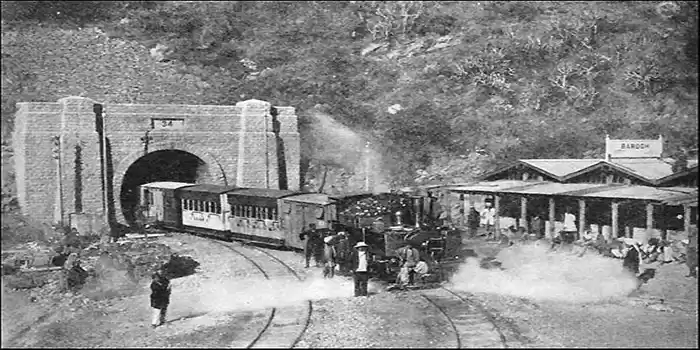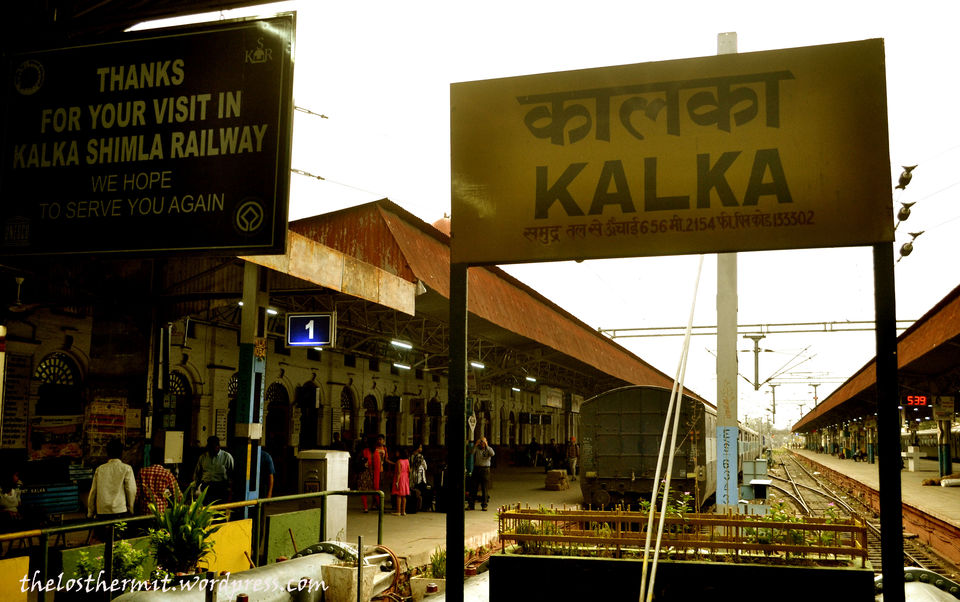
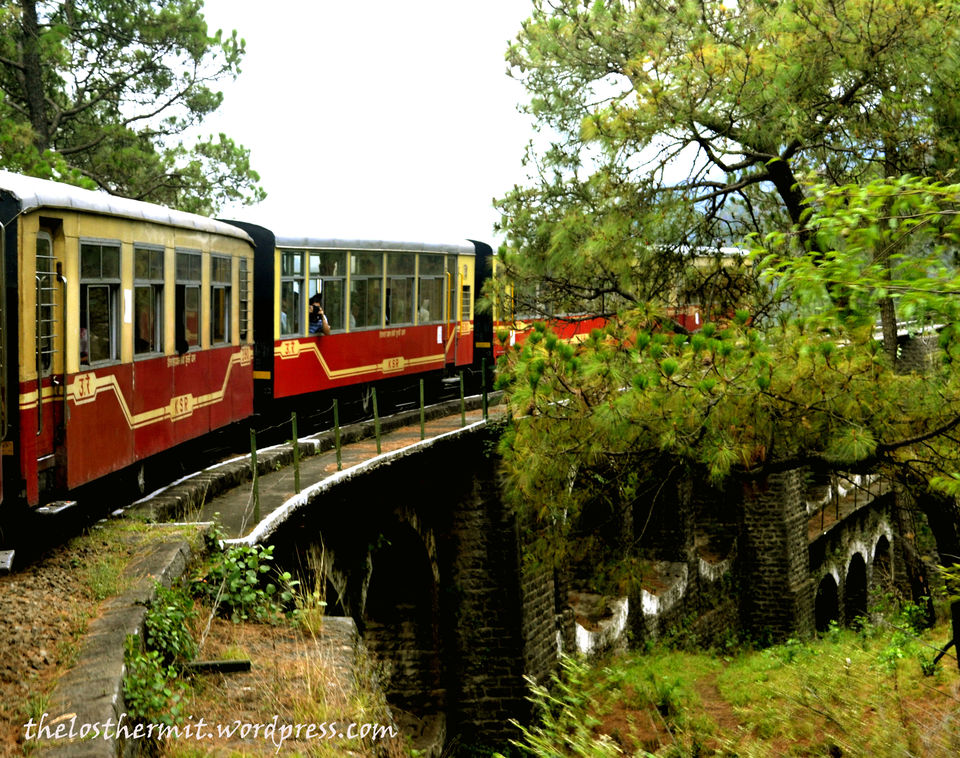
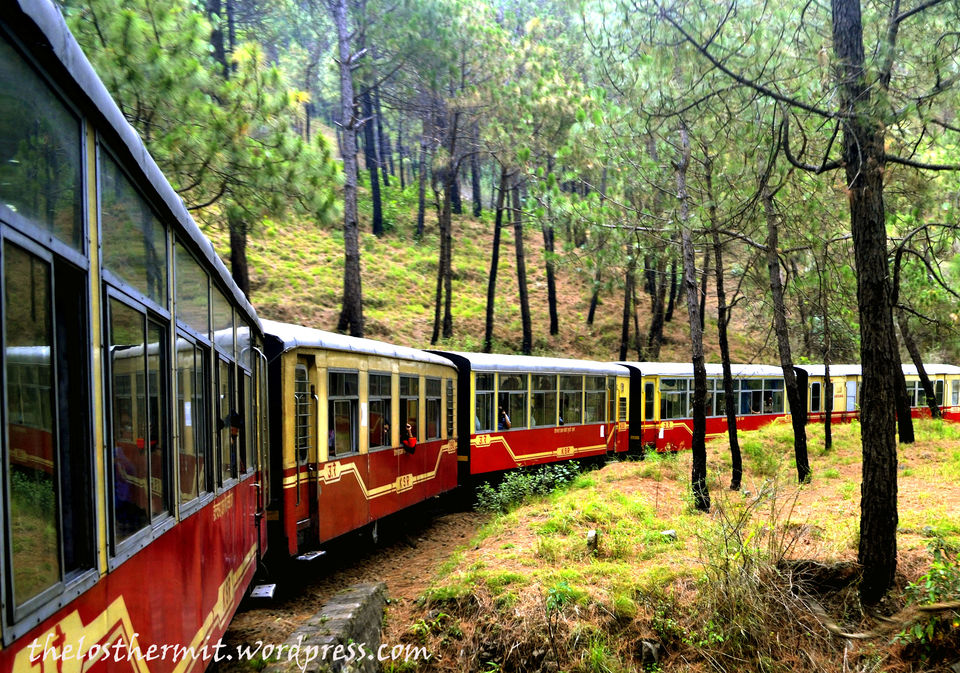
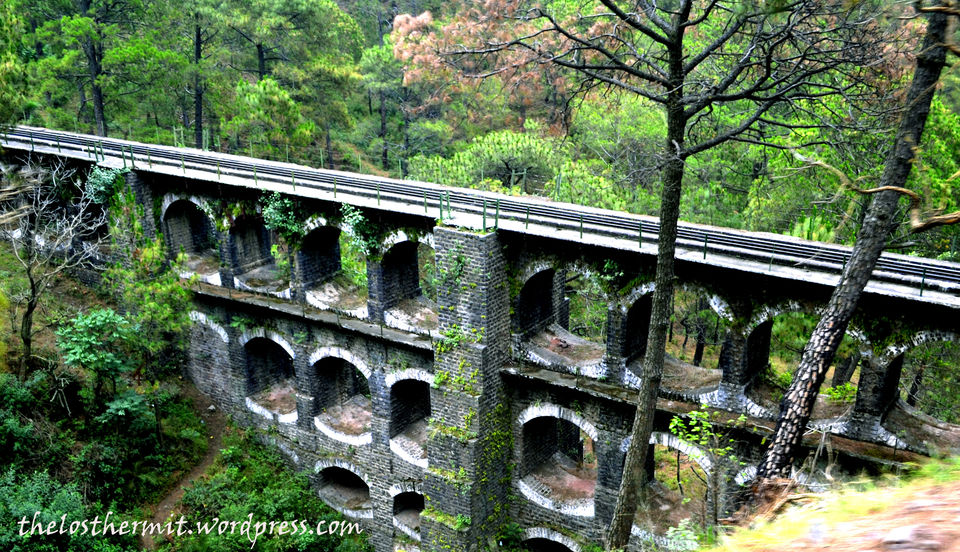
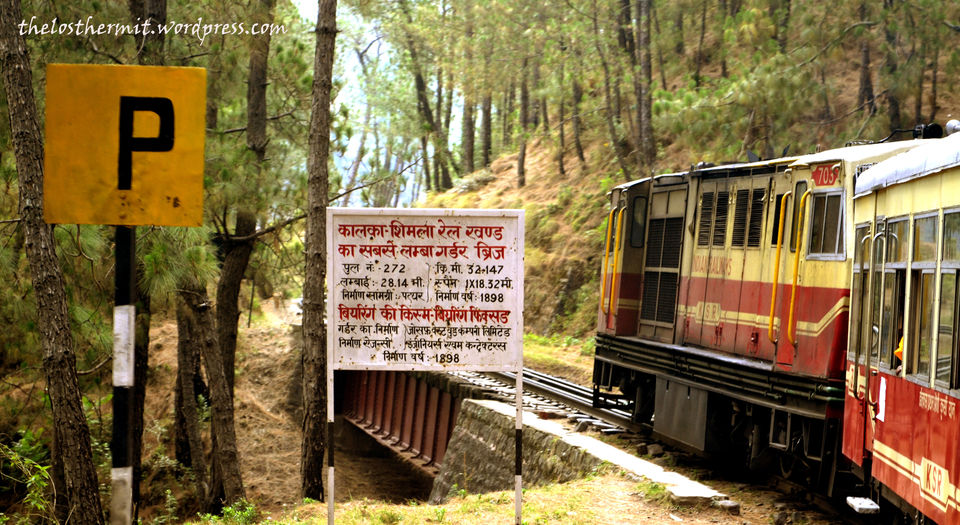
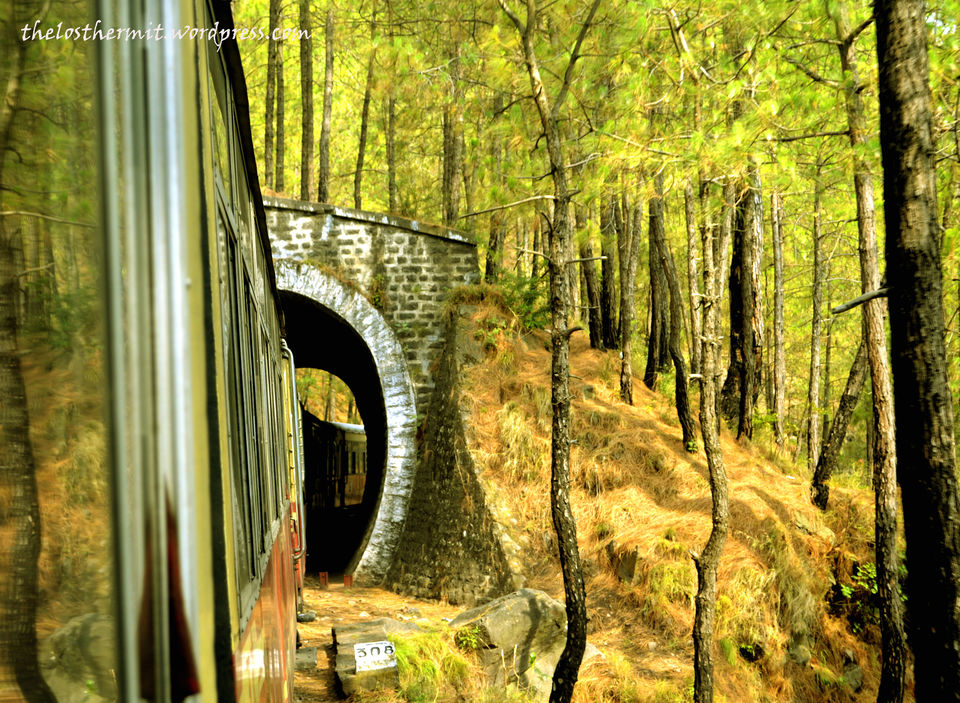
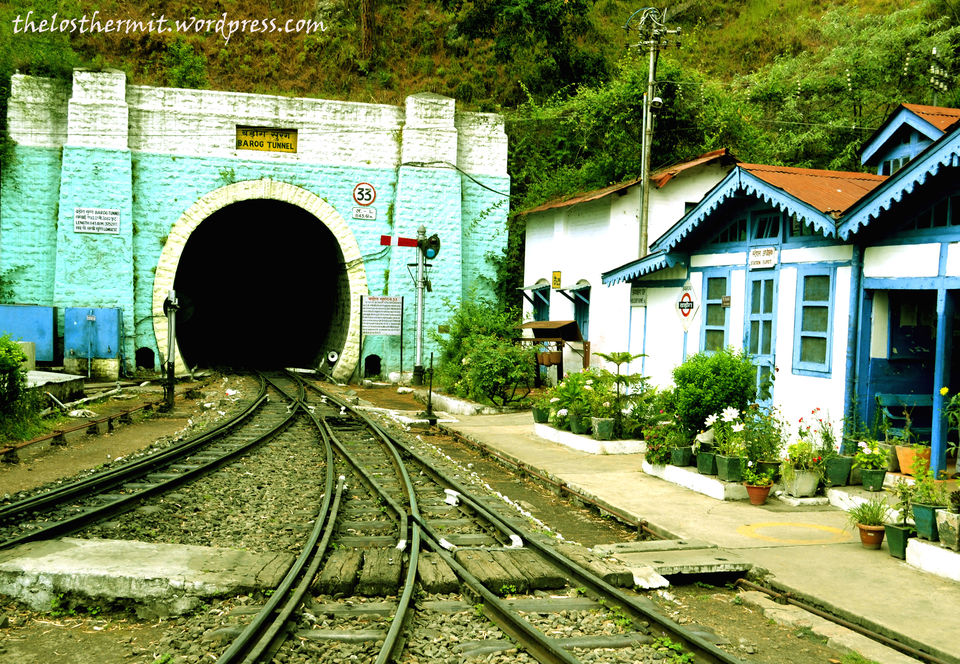
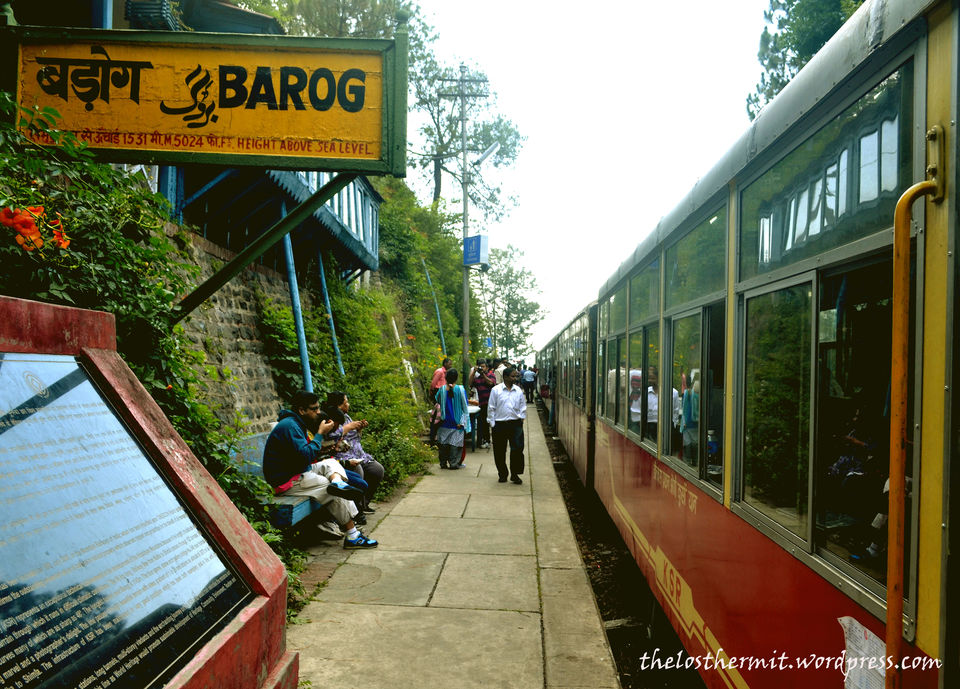
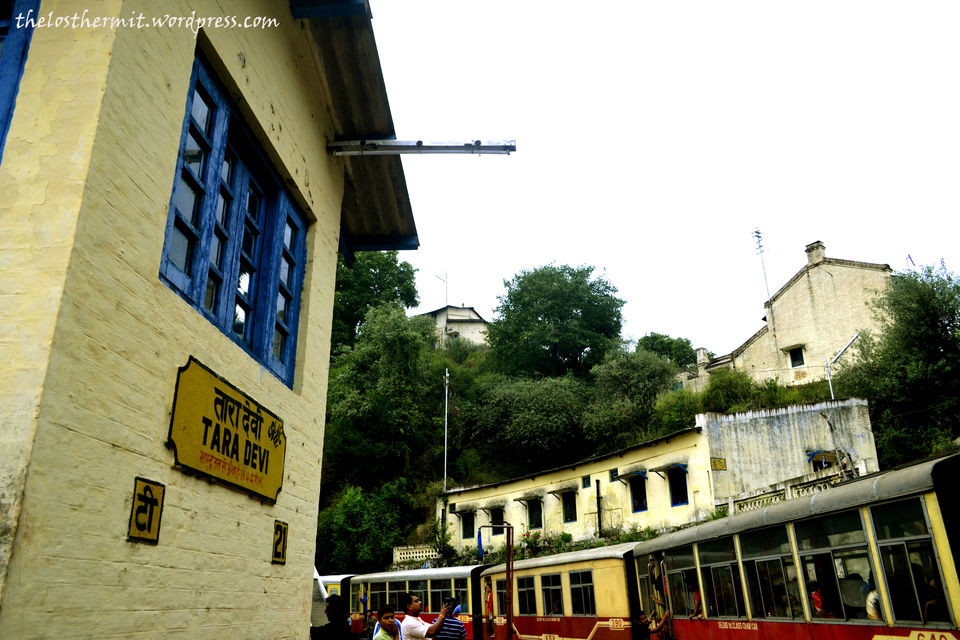
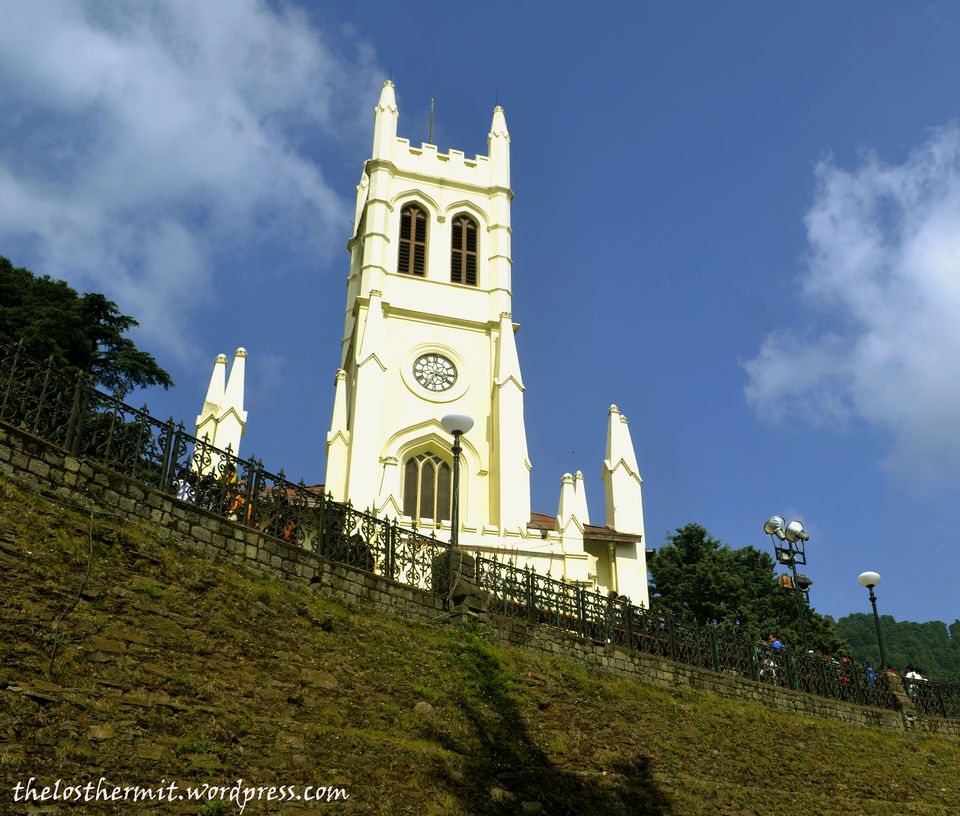
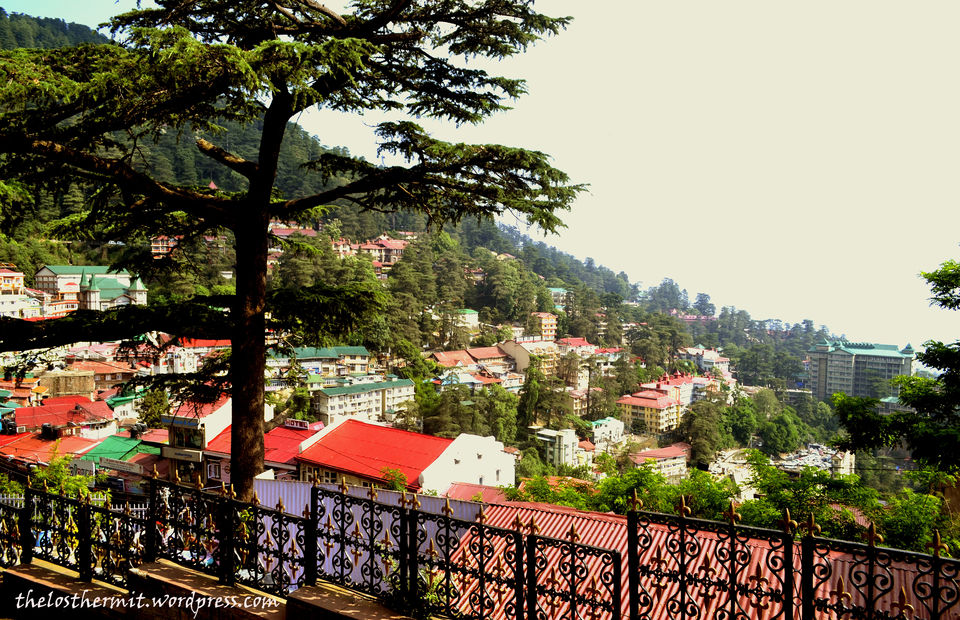
On a cold morning when the cloud of fog has all but engulfed the hills around, an old station master comes out of the colonial office rooms with a shawl wrapped and a bright lantern in hand to signal the train to passby.The pretty looking locomotive whizzes by,with the driver giving a friendly smile and a wave of hands to the shawl-wrapped man who removes the monkey cap from his mouth to smileback.With his duty done,he returns to the wooden cabin of the Station Master and adjusts the British era wall clock which has to be still wound by hand.Thescene is timeless,it doesn’t matter if you are doing the journey in 21st century or 100 years before that.Making the train journey to India’s erstwhile summer capital Shimla from the quant station of Kalka,early in the morning is one of the best things that can happen to you in the hills of India.
Kalka which is around 20 odd kms from Chandigarh lies at the foothills of the Shivalik ranges or the lower most steps of Himalayan ranges.The promise of the high hills is on the horizon. Aptly named Shivalik express leaves from the narrow gauge junction,just behind the main station compound at around five thirty in the morning.Thevintage train will make the ninety six km journey to Shimla in around five hours but statistics are not important here.Romance of the hills doesn’t take details into account.What matters is –on these old & narrow railway lines,time runs backward and slows down somewhere at the beginning of twentieth century,a period of theRaj.The realists see this as a masterpiece of engineering and logistics while the romantics marvel as the pretty little train whistles it’s way through oaks and pines into pristine wilderness of North Indian hills.
Time becomes fluid,as not only history rewinds itself but every passenger seated by the large transparent window of Shivalik Express is a child again,waiting for something wonderful tohappen.The sense of wonder and curiosity is what separates a gloomy adult from a child.
You will understand what I mean when you see old couples huddled up together in those cold cabins and looking outside to the mist ridden mountains together.The shrill whistle of the engine upfront kept waking up people in the villages as it cut through the dense fog on the climbing and twisting railway line.
The anticipation of the journey is a very vital part of travel itself and people who understand that in the first place, revel in it altogether. The Time Machine winds back on the Himalayan foothills.WhenShimla became British India’s summer capital in 1864,the need for a quick and efficient transportation from Delhi became eminent. The officers and their ladies preferred the cool air of the hills over thehot and humid Delhi.But it was only in 1903 that the railway line from Kalka to Shimla opened as the project was a herculean task for engineers and workers.Even today,the line remains a marvelous engineering feat with 102 tunnels on the route and around 864 Roman Arch bridges. This UNESCO World Heritage Site was opened for operation by the infamous Viceroy Curzon on November 9th,1903.The classic locomotive would make a climb from 2152 feet altitude at Kalka till 7116 feet at Shimla.
Many small towns and hamlets passed by as the train made it’s way slowly to higher altitude on the Shivalik ranges.The signal man at Dharampur station stood among a crowd of schoolchildren and waved his green flag,while the kids waved happily at thepassengers.There are no unscheduled stops here,the train moves like clockwork.
The children in my coach started counting tunnels as we passed them one after the other,and then I informed them that the tunnels have numbers and length written on them,at which they scorned at me for disrupting their mission.They would shriek in excitement whenever the train traversed a dark tunnel.
The sleepy hamlets of Himachal come into view ,each hidden safely in the lap of rolling hills and the buzz of early morning was visible in the dense fog.The sunlight was still behind low lying hills and all land was in semi darkness.At each small station on the route,the signal man or the station master would wave the green flag cheerfully and greet the driver.
When it came to the joyful shrieks of passengers ,they could not hold up the shout for long at Barog Tunnel because the tunnel lasts for nearly three minutes.The Barog Tunnel at 1144 meters is the longest tunnel on the route and appears just before the Barog Station.As we pulled into a stop at Barog,we could feel the chill in the mountain air and knew that we had left the plains behind us.The train makes it’s only stop at the Barog station which has a very tragic tale behind it.
During the British rule, a gentleman called Er Colonel Barog was appointed by the Government to complete the tunnel work at the site,but due to a small miscalculation on his part,the dug tunnels did not meet and he was fined One rupee as a symbolical punishment by the British Government. He could not take the humiliation of it and shot himself while walking his dog one fine day.Though his dog ran for help but it was too late by then.He was later buried in the incomplete tunnel and the place was named after him.A person named H.S Harrington completed the tunnel and a local sadhu called Bhalku guided him.Such was the contribution of Bhalku sadhu in the completion of the railway line that you ‘ll find a Baba Bhalku Rail Museum near old bus stop in Shimla.
The Barog’s Tunnel is also popularly known as the Kissing Tunnel as couples on their honeymoons would steal chances in the three minute long darkness that prevailed in the meantime but perhaps the situation got out of hand one day and now authorities have put illuminated light bulbs inside the coaches,putting an end to the legendary escapades altogether.
Villages on meadows appeared out of the mist as sun penetrated thecountryside.As the coaches twisted and churned at impossible angles,we looked at the Roman Arch Bridges below the rail line that looked beautiful among the alpine woods.These are specially designed bridges built on many layers and having aqua-ducts in them for water to pass through.It’s these bridges that provide a classical vintage outlook to the railway line.The June flowers bloomed amid staggering oak trees by our side.
There are some things from the old and forgotten world that ought not to be tinkered with,they hold values that the modern world still needs time to understand.Though it’s slowly fading out,the station master’s cabin at Barog and Summer Hill used to have old wall clocks,to be wound by hand.The Neal’s Token Instrument System was used for track control on the line,almost a Victorian devicenow.The maintenance men use plain mirrors to reflect sunlight into the tunnels while working inside them and old signal men use lanterns to communicate with the train driver.This is a wormhole,a space-time distortion through which we travel back in time.
The train made an unscheduled stop at Taradevi station while grey clouds closed in from the hills nearby.A slight drizzle was afoot,when the passengers alighted to stretch their sore limbs .The station is adjacent to the Taradevi tunnel,the 2nd longest on the route at 992meters.This one runs exactly beneath the Tara Devi Hill,and hence the locals had opposed it’s construction back in old days,fearing the Goddess’s wrath.One fine morning,the work had to be stopped when a rumor ran amok about a huge serpent in the tunnel,apparently sent by Tara devi to stop the blasphemous work going on.The workers were greeted by happy cheers from local but the snake turned out to be a long iron pipe.No divine intervention could stop the completion of tunnel no. 91 on Kalka-Shimla Rail line.
The drizzle had turned to light rain and the air had turned foggy and cold within no time.While the train pulled out of Taradevi again,the adjacent hills were sheathed in thick clouds and looked cold and surreal from the train line.
The train moved slicing through the mist again and the last signal man at Summer Hill station was standing with a big yellow umbrella.Shimla was on the adjacent hill,but was barely visible under the cloud cover.There is something nostalgic about rain in the mountains that everyone can relate to,even if he has not been brought up on hills.It’s so assuring and comforting to enter such a world.Somehow you feel secure from everything else in the world.
Out of the mist,a yellow board appears-Shimla,2206 meters aboveMSL.The rains fall hard at the station while the left over clouds hang over the low lying hills nearby.The other side of the wormhole is cold and chilly and it’s about eleven in the morning on a fine June day.
This post was originally published on The Lost Hermit.

